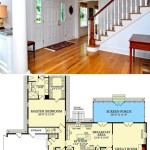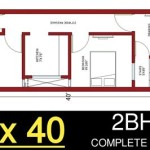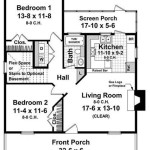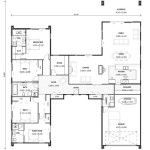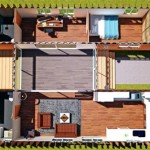Off Grid Home Design Plans
Off-grid living is becoming increasingly popular as people seek to minimize their environmental impact and live a more sustainable lifestyle. Designing an off-grid home requires careful planning and consideration of specific design elements to ensure the home is self-sufficient and meets the unique challenges of living without access to conventional utilities.
Here are some key design considerations for off-grid home plans:
Energy Generation and Storage
Off-grid homes rely on alternative energy sources such as solar, wind, or hydro power to generate electricity. The design should incorporate energy-efficient appliances and lighting fixtures to minimize energy consumption. A battery storage system is also necessary to store excess energy generated during the day for use at night or during periods of low power generation.
Water Management
Access to a reliable water source is crucial for off-grid living. Rainwater harvesting systems, wells, or nearby bodies of water can provide water for drinking, cooking, and sanitation. The design should include a water storage tank and filtration system to ensure a clean and safe water supply.
Heating and Cooling
Off-grid homes must be designed to maintain a comfortable indoor temperature without relying on conventional heating or cooling systems. Passive solar design strategies, such as large south-facing windows, thermal mass, and cross-ventilation, can help regulate temperature naturally. Wood stoves or fireplaces can provide supplemental heat during the winter months.
Waste Management
Off-grid living requires responsible waste management practices. Composting toilets or septic systems are commonly used for human waste disposal. For solid waste, recycling and composting systems can minimize the amount of waste that needs to be disposed of off-site.
Building Materials and Construction
The choice of building materials and construction methods can significantly impact the energy efficiency and durability of an off-grid home. Sustainable and energy-efficient materials, such as straw bales, reclaimed wood, and recycled glass, can reduce the environmental impact of the home.
In addition to these considerations, off-grid home plans should also address the following:
- Site selection: The location of the home should have ample sunlight for power generation and access to water.
- Floor plan: The home should be designed to maximize energy efficiency and natural light, with a compact and efficient layout.
- Electrical system: The electrical system should be designed to handle the specific energy needs of the home and incorporate battery storage.
- Plumbing system: The plumbing system should include water filtration, storage, and distribution.
- Maintenance and repair: Off-grid homes require regular maintenance and repairs, so the design should consider accessibility and ease of maintenance.
By incorporating these design elements, off-grid home plans can create self-sufficient and sustainable living spaces that minimize environmental impact and promote a more harmonious relationship with the natural world.

The Off Grid Cabin Floor Plan Small Living In Style

Passive Solar House Plans For Our Off Grid Homestead Byexample Com

Off Grid Archives Small Wooden House Plans Micro Cabin Garden Shed Cottage Blueprints

Cottage Style House Plan 1 Beds Baths 688 Sq Ft 556 3 Houseplans Com

How To Design A Floor Plan For Your Off Grid Cabin

20 Fresh Off Grid House Plans Image

The Best Of Small Off Grid Home Plans New Design

Tiny Eco House Plans Off The Grid Sustainable Houses

Wanna Get Away 10 Tiny House Plans For Off Grid Living Dfd Blog

The Ultimate Guide To Off Grid House Plans Truoba


